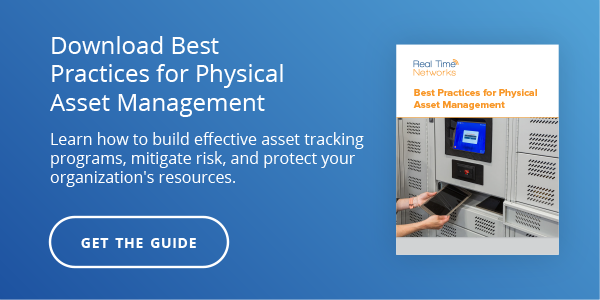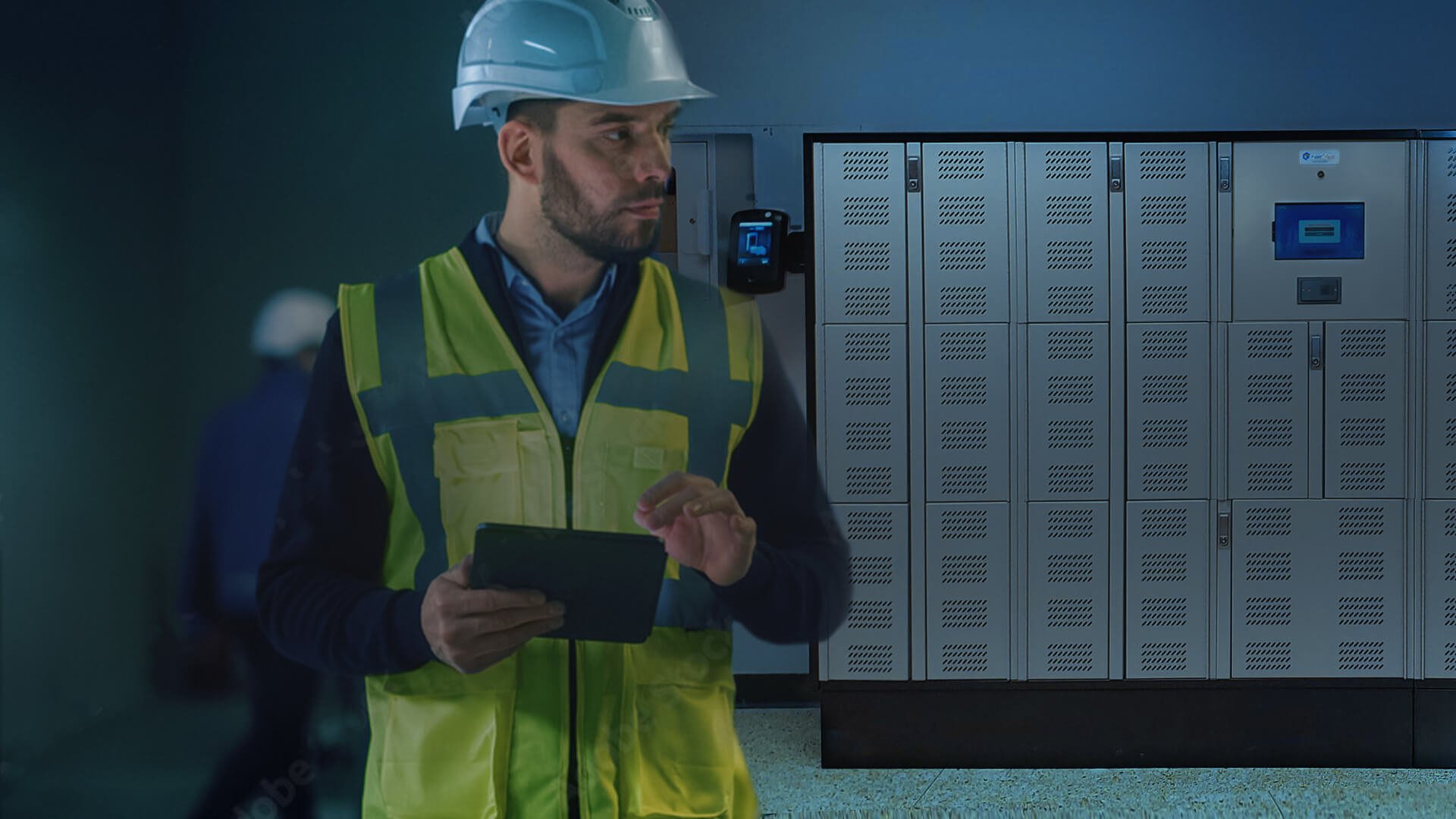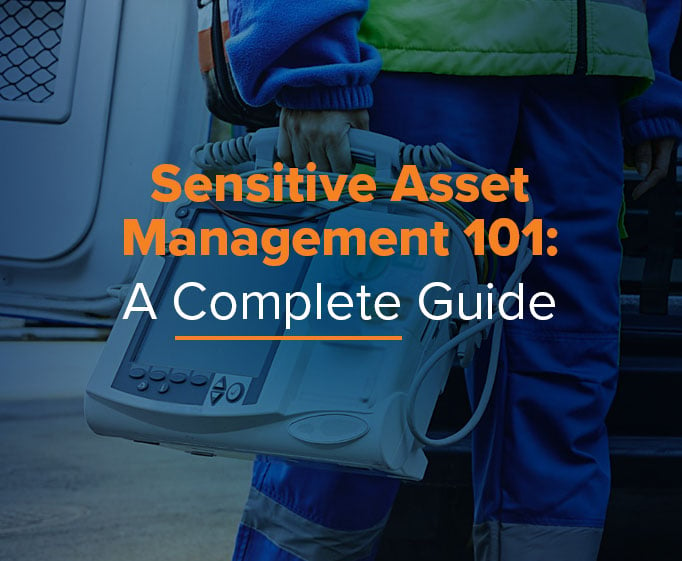By Jay Palter | July 28, 2020

No matter how many safeguards you put in place, some of your business equipment will inevitably be damaged. It might be due to an employee’s honest mistake, because they ignored instructions, or it could even be the result of a malicious act, but damage is going to happen. This makes a company equipment damage policy an important tool for protecting your organization’s finances and maintaining productivity.
In this blog post we'll talk about the top 10 must-have elements you need in your company equipment damage policy:
- Objectives and Scope
- Definitions
- Roles
- Company Responsibilities
- Employee Responsibilities
- Policy Exceptions
- Communication Process
- Consequences
- Compensation Process
- Links to Related Forms
What Is the Purpose of a Company Equipment Damage Policy?
The purpose of any policy is to outline acceptable behavior within your organization. Like the rest of your safety and security management practices, the purpose of your equipment damage policy is to outline the behavior you expect employees to follow—in particular, in order to avoid potential damage to your physical assets. It also should explain how to respond when equipment inevitably is damaged.
Legal Constraints on Equipment Damage Policies
Having a documented equipment damage policy is an important legal protection. Under labor laws in most of the countries that Real Time Networks serves, including the U.S., Canada, and the U.K., businesses cannot require employees to pay for damaged equipment unless the employees have given prior, signed consent.
Under U.S. law, employers can only recover damages through payroll deductions in very limited circumstances, and those deductions can’t drop the employee’s wage below the legal minimum wage.
Having a documented policy in place supports the company if a civil case results from equipment loss or damage. It can help demonstrate wrongdoing if you prove an employee was aware of the policy.
10 Important Elements to Have in Your Company Equipment Damage Policy
There are many templates for company equipment damage policies online. However, they are written to be generic.
You’ll probably want to write a custom policy that suits your business’s particular needs. No matter how unique your policy needs to be, there are 10 critical components we think you should always include.
1. Objectives and Scope
Before getting into detailed processes, you need to make sure everyone who reads your equipment damage policy understands what its goals are. How will it help the company? How will it help employees?
Also, lay out the scope of the policy: where and when will it be in effect? What situations does it not cover?
2. Definitions
Because there are financial and possibly legal consequences for parties that don’t follow an equipment damage policy, you should clarify what certain essential terms mean. What could “compensation” include? What is regular equipment and what are “major assets?” What does the business consider to be “negligence”?
If a disgruntled former employee takes you to court claiming you never explained what negligence meant, sharing the policy training they completed will support your case.
3. Roles
You may want to designate specific roles and responsibilities to individuals within your business. For example, you may want to assign staff to be reporting officers. Under your policy, these officers would be expected to receive all damage reports submitted by employees. Depending on the size of your business, you might either choose one officer for the entire company, assign individual officers in each department, or designate every manager as a reporting officer.
4. Company Responsibilities
Detail what the company and its reporting officers are expected to do to prevent and respond to reports of damage.
5. Employee Responsibilities
Lay out all of the responsibilities you’re putting on employees to prevent equipment damage. Also, make clear how you expect them to report damage to management. If you’re going to require compensation for damages, that needs to be explained here.
6. Policy Exceptions
You don’t necessarily need to list every possibility of exceptions to your guidelines here, but if there are some obvious situations you want to note, you should. If nothing else, you need to explain how extraordinary circumstances should be reported and handled.
7. Communication Process
So far, your equipment damage policy has detailed a bunch of different processes and responsibilities. You also need to spell out how people are expected to communicate in order to ensure that they’re properly aligned in following your standard operating procedures. Some communication may be fine on the phone or in person; other conversations might need to be documented in email or on paper.
8. Consequences
Your policy needs to clearly explain what the consequences could be when damage to equipment is determined to be an employee’s fault. This could include compensating the business, disciplinary action, or in the case of serious damage, termination or civil suits.
For example, if an employee caused damage due to poor job performance you might want to carry out disciplinary action. If they were negligent, that might be grounds for termination.
9. Compensation Process
If you expect employees to compensate your business for damages, explain the process for how compensation works. Explain how the repayment schedule will be determined and what the consequences are for not sticking to the schedule.
10. Links to Related Forms
If there are any documents your employees will need in order to comply with this policy, they should be referenced or directly linked. Make sure employees have easy access to the forms they need to document losses or damage. Make sure auditors have access to all the paperwork they need to complete investigations.
How to Ensure Adoption
Fully documenting your company equipment damage policy is just the first step. Now you need to ensure the policy is properly put into practice. How?
1. Get Buy-In from the Top
You need to encourage rank-and-file employees to follow your new policy, and that is best done through leading by example. Have your business owner or executive team support it at your next company-wide meeting, or have them announce it in a company-wide email. You need to demonstrate that the entire organization is committed to this new initiative and it is not just your individual pet project.
2. Conduct Comprehensive Training
If possible, keep training sessions small and run them team by team. Staff tend to tune out company-wide generic training videos. If training is made relevant to their specific team, they’re more likely to pay attention. Always conduct follow-up training to keep the ideas fresh in peoples’ minds.
3. Keep Your Policy Up to Date
Review your business equipment damage policy every year or two to ensure it stays relevant. Employees are less likely to take an equipment policy seriously if it is outdated. References to pagers and fax machines in your policy are pretty clear signs of how seriously your company cares about its policy.
Go Beyond Policy: Put the Right Systems in Place
One way or the other, protecting company equipment is going to take a lot of effort. That effort can come from manual labor or it can be done by technology. Many different security systems on the market are either prebuilt or customizable for equipment management. Some include:
Smart Asset Lockers
These are storage lockers with a built-in computer and sensor network. They electronically control access to different compartments, monitor what is stored inside, and report on that equipment’s condition.
Asset lockers improve employee accountability by providing a complete transaction record for stored equipment. They can also be programmed to require employees to document damage to equipment when they sign items out or back in.
Key Control Systems
These are another kind of smart management system. Instead of securing assets in individual lockers, they secure key rings in lock slots. They also contain a sensor network that monitors whether the proper key ring was signed out or returned.
Key control systems keep detailed, automatically collected transaction logs so you always know who was the last person to sign out a key ring. More importantly, you’ll have a timestamped log, so you know who has access to the key-secured locations where your equipment is stored, and when they were there.
People Tracking Solutions
These are wireless tracking systems for monitoring the location and safety of personnel in high-risk settings. Employees can request attention for injury or equipment damage through a duress alert button on a wireless badge.
All of these technologies have their place. Just make sure you’re acquiring cost-effective solutions that will actually deliver value to your business.
Prioritize Equipment Damage Prevention
Having a company equipment damage policy protects your business against minor, day-to-day problems and against major losses that might result in court cases. Developing a company equipment damage policy takes some effort, but it saves time, money, and headaches down the road.
Want to learn more about best practices for physical equipment and asset management? Download our free guide today.
Subscribe to our blog

Jay Palter
Vice President of Marketing & Partnerships






